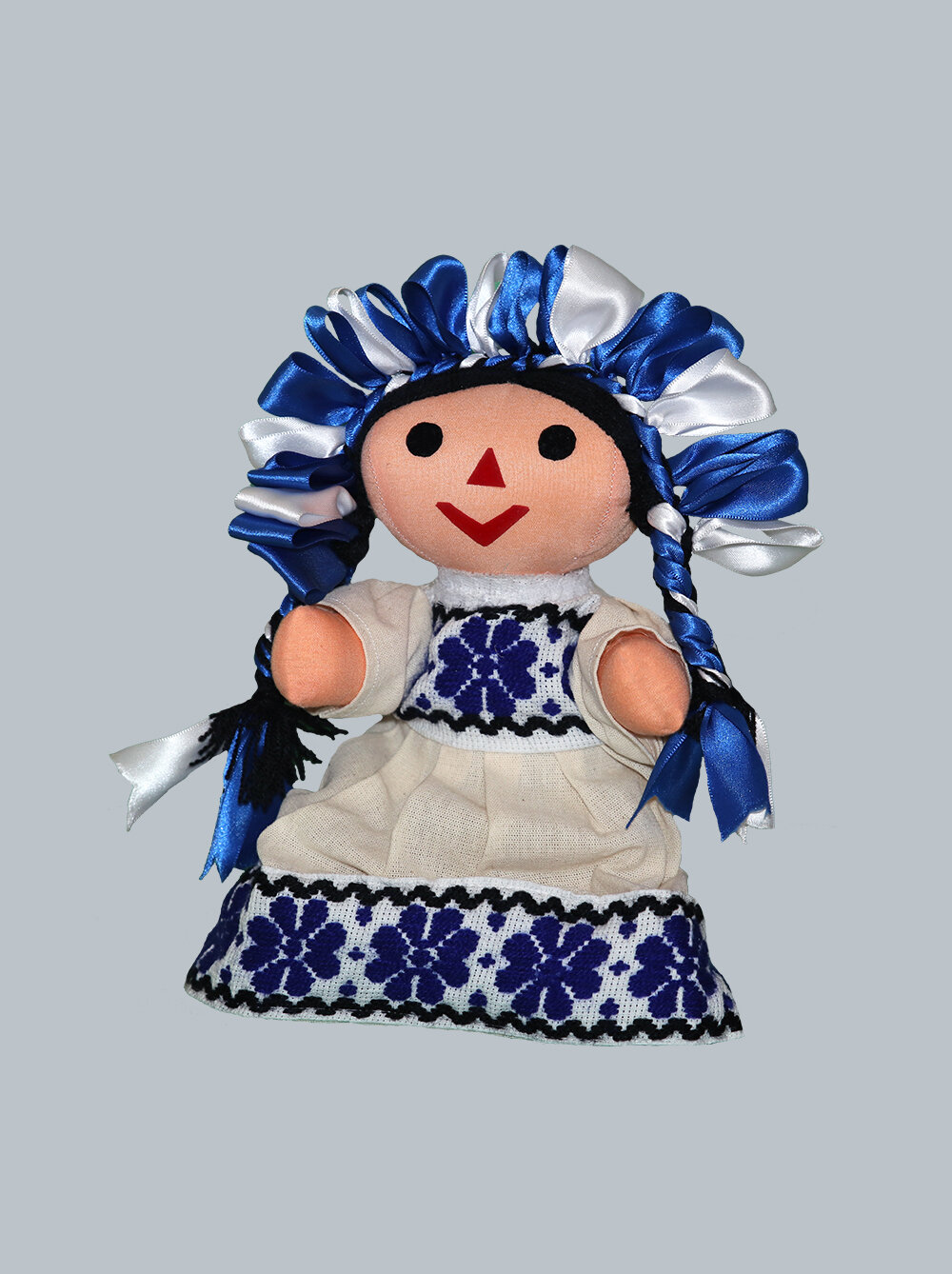Mexican Maria Doll
A Mexican Folk Tradition
These Maria dolls were handmade by women from the state of Querétaro, which is located in Central Mexico and largely inhabited by the indigenous Otomí people. This Maria doll’s traditional skirt is modeled after the ones worn by Otomí women. Share this unique Mexican doll with the kids in your life to connect them with country’s rich history and traditions.
Handmade in Querétaro, Mexico
Made with 100% cotton, satin and wool
Dimensions: 8” x 11”
Ages 4 and up
Free Shipping
All sales final. No refunds, returns or exchanges.
A Mexican Folk Tradition
These Maria dolls were handmade by women from the state of Querétaro, which is located in Central Mexico and largely inhabited by the indigenous Otomí people. This Maria doll’s traditional skirt is modeled after the ones worn by Otomí women. Share this unique Mexican doll with the kids in your life to connect them with country’s rich history and traditions.
Handmade in Querétaro, Mexico
Made with 100% cotton, satin and wool
Dimensions: 8” x 11”
Ages 4 and up
Free Shipping
All sales final. No refunds, returns or exchanges.
A Mexican Folk Tradition
These Maria dolls were handmade by women from the state of Querétaro, which is located in Central Mexico and largely inhabited by the indigenous Otomí people. This Maria doll’s traditional skirt is modeled after the ones worn by Otomí women. Share this unique Mexican doll with the kids in your life to connect them with country’s rich history and traditions.
Handmade in Querétaro, Mexico
Made with 100% cotton, satin and wool
Dimensions: 8” x 11”
Ages 4 and up
Free Shipping
All sales final. No refunds, returns or exchanges.
History of the Maria Doll
The Maria doll is one of Mexico’s most popular folk traditions. The doll rose in popularity during the 1970s when large numbers of indigenous Otomí and Mazahua people migrated to Mexico City. Due to their unique traditional clothing, the women became known as Marias, based on a popular fictional TV character called La India María, who wore similar clothing to them.
A government program was created to support these women, many of which were living in poverty, with the resources needed to produce their traditional handcrafts like clothes, bags and eventually Maria dolls. Today, indigenous women from each region of Mexico have created their own versions of the Maria doll. The size, design and colors of their skirts often reflect the culture of the region in which they are made. However, the one thing these traditional Mexican dolls all have in common is their friendly faces.

